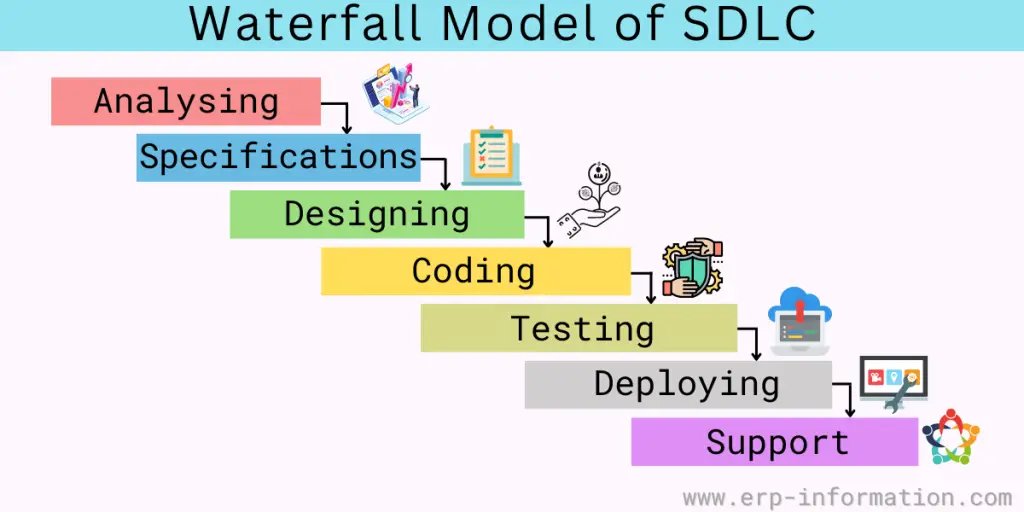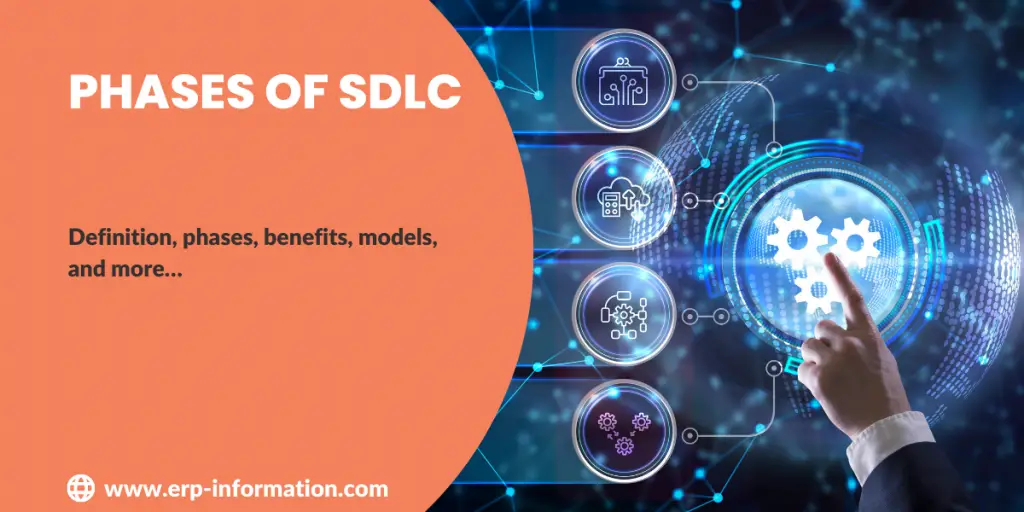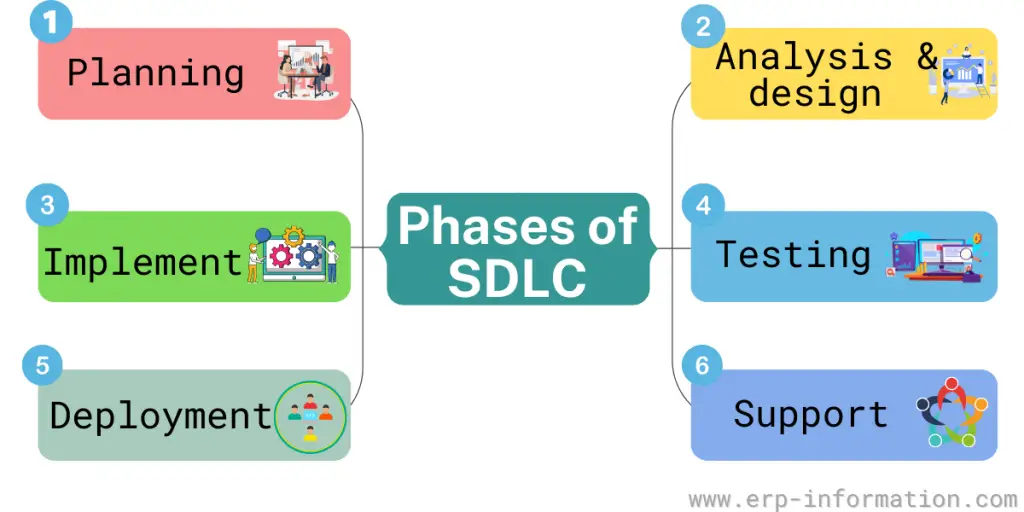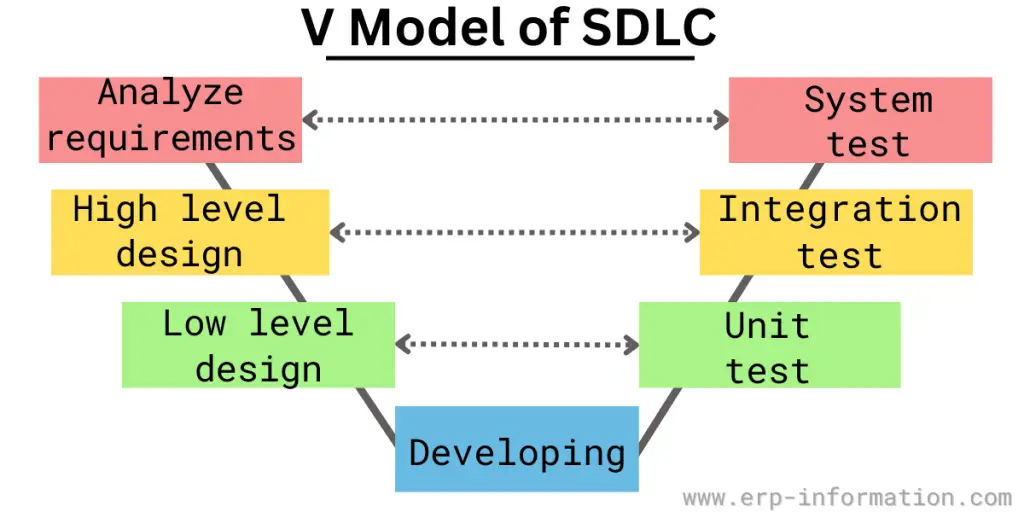There are so many models and phases of SDLC that it can be tough to know which is best for your business. However, choosing the right model is important because your project could suffer if you don’t.
In this blog, we will discuss the phases, benefits, and models of SDLC so that you can make a better decision. We will also look into best practices and history.
What is SDLC?
Software Development Life Cycle is a process that gives a framework for the orderly development, testing, and implementation of software.
Development lifecycle SDLC includes establishing an organizational environment for software development, management control structures and procedures, defining software requirements, design and coding, testing and quality assurance, deployment, and maintenance.
History of Software Development Life Cycle
In the beginning, software was created by writing code line-by-line, testing it as you went along, and making changes as needed. Unfortunately, this process was very time-consuming and resulted in low-quality software.
In the late 1950s, a new approach to software development called “structured programming” was introduced. Structured programming involved breaking down software into smaller, more manageable pieces, which made it easier to understand and modify.
In the 1970s, a new software development methodology called “software engineering” was introduced. The goal was to produce high-quality software that met the customer’s needs.
The first version of the Software Development Life Cycle model was introduced in the late 1970s. It consisted of five phases: requirements gathering, design, coding, testing, and deployment.
This model was refined in the early 1980s to include a sixth phase called maintenance.
The software development model has evolved and is now used differently. However, the basic principles remain the same. They are
- Break down the problem into smaller pieces.
- Develop a plan for solving each piece.
- Put all the details together and test them thoroughly.
Phases of SDLC
The below image will help you to learn about SDLC phases.
1. Planning
The planning phase of the SDLC is the first phase of the software development process. It is responsible for organizing and creating a plan for the rest of the project. It includes,
- Establishing the project’s scope, schedule, and budget
- Defining the project’s requirements and design specifications
- Building a development team to work on the project and assign roles and responsibilities
- Creating a requirements document used to create the design and implement the software.
2. Analysis & design
The goal of analysis and design is to understand the project’s requirements and create a design that meets them. It includes,
- Analyze the system’s requirements and design a solution that meets them
- Define the system’s structure, features, and operations
- Create prototypes and models to illustrate the system’s design
3. Implementation
The goal of implementation and testing is to take the design and turn it into a working system.
In this phase, developers write the code for the system according to the design specifications
4. Testing
The testing face is the system to ensure that it meets the requirements. If you find an issue go back to design and fix it.
5. Deployment
The deployment goal is to put the software into production and start using it. This phase includes,
- Setting up the system for use in production
- Testing the system in a live environment
- Manage changes and updates to the system
6. Support
The goal of support is to provide assistance and maintenance for the system. This phase includes,
- Assisting users with any problems they may have
- Training users on how to use the system
- Update the system as needed to keep it running smoothly
Software Development Life Cycle Benefits
- It helps to ensure that the final product is of high quality.
- Breaking down the project into smaller parts makes managing and tracking progress easier.
- It allows different teams to work on the project life cycle, leading to a more efficient workflow.
- The different phases also allow testing and reviews to be carried out, which helps identify and fix any potential problems early on.
- These phases help ensure the project is completed on time and within budget.
- Finally, In this phase help to ensure that the end product is user-friendly and meets all requirements.
SDLC Models
The most popular models are:
Waterfall model

The waterfall or sequential model is the most traditional software life cycle model, where each phase must be completed in order before moving on to the next.
Spiral model
The spiral model is an extension of the sequential model, where phases can be repeated multiple times.
Iterative model
The iterative model is the most modern model of SDLC, where phases can be repeated as often as needed until the project is completed.
V-model
The V-model is a variation of the waterfall model, where testing is done after each phase.
Agile model
The agile model is very flexible, where requirements change at any time.
Rapid application development (RAD) model
The rapid application development (RAD) model is an even more flexible model, where the focus is on creating a working prototype as quickly as possible.
Which model is best for your project will depend on several factors, such as the size and complexity of the project, the available resources, and the timelines.
SDLC Best practices
Always have a plan
That is probably the most important rule of all. When you have a plan, you know what to do and when. That help keep your project on track.
Use appropriate tools
There are many tools present to help with this project. First, ensure you are utilizing the proper tools for the job. That will help ensure accuracy and speed up the process.
Have regular checkpoints
Make sure to set regular checkpoints throughout the project so that you can ensure that it is proceeding as planned. That will help avoid any costly surprises down the road.
Get input from all stakeholders
Make sure to get input from everyone who will be affected by the project. That includes team members, managers, and customers, among others. Getting everyone’s information can ensure that the project meets everyone’s needs.
Early and often testing
Testing is one of the essential steps in the software development process. Make sure to test early and often so that any problems can be identified and fixed quickly. That will help ensure a successful result.
Keep records
Maintaining records of everything related to your software development project is vital. That will help if there are any questions or problems later on down the road.
FAQs
What is the main purpose of each phase of SDLC?
The main purpose of the Software Development Life Cycle (SDLC) phases is to a plan for making software. In the Inception phase, you determine what the project needs and wants. The Elaboration phase is when you design how it will work. In the Construction phase, you write code and make it ready to use. Finally, in the Transition phase, you put it where people can use it.
Which is the most difficult phase in SDLC?
Creating the software and ensuring it meets all its needs is the most time-consuming and difficult part of developing a program. So Development and implementation are the most difficult phases in SDLC.
Which tool will be used during the build phase of SDLC?
WorkerB is a tool that helps make it easier to review organizations’ code. It helps you go through the different phases of software development.
Conclusion
SDLC is a process that helps to ensure the quality and success of software projects. This post discussed different models and phases of SDLC.
The best model for the project will depend on a variety of factors. However, by following the best practices for software development, you can help ensure a successful outcome.


